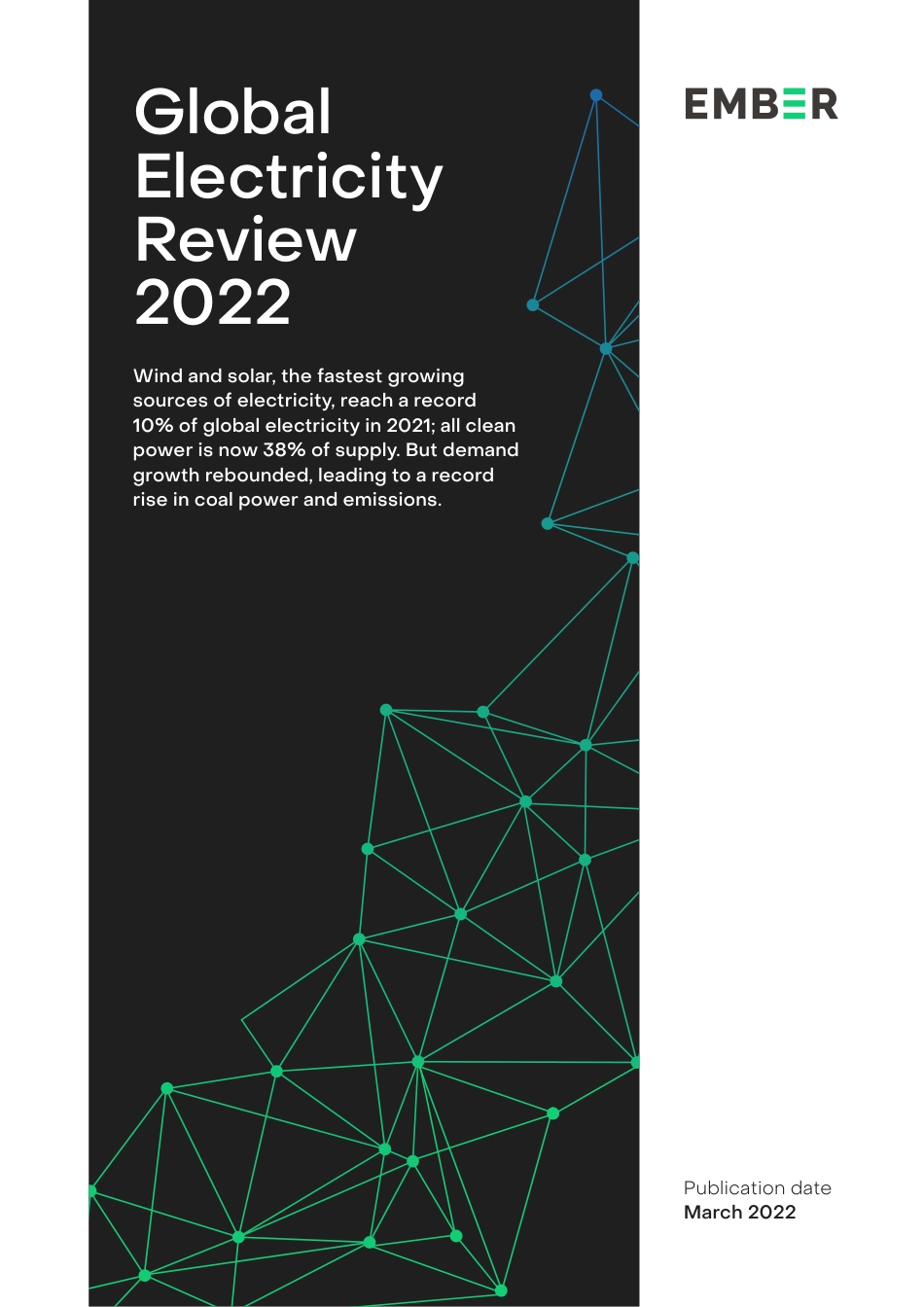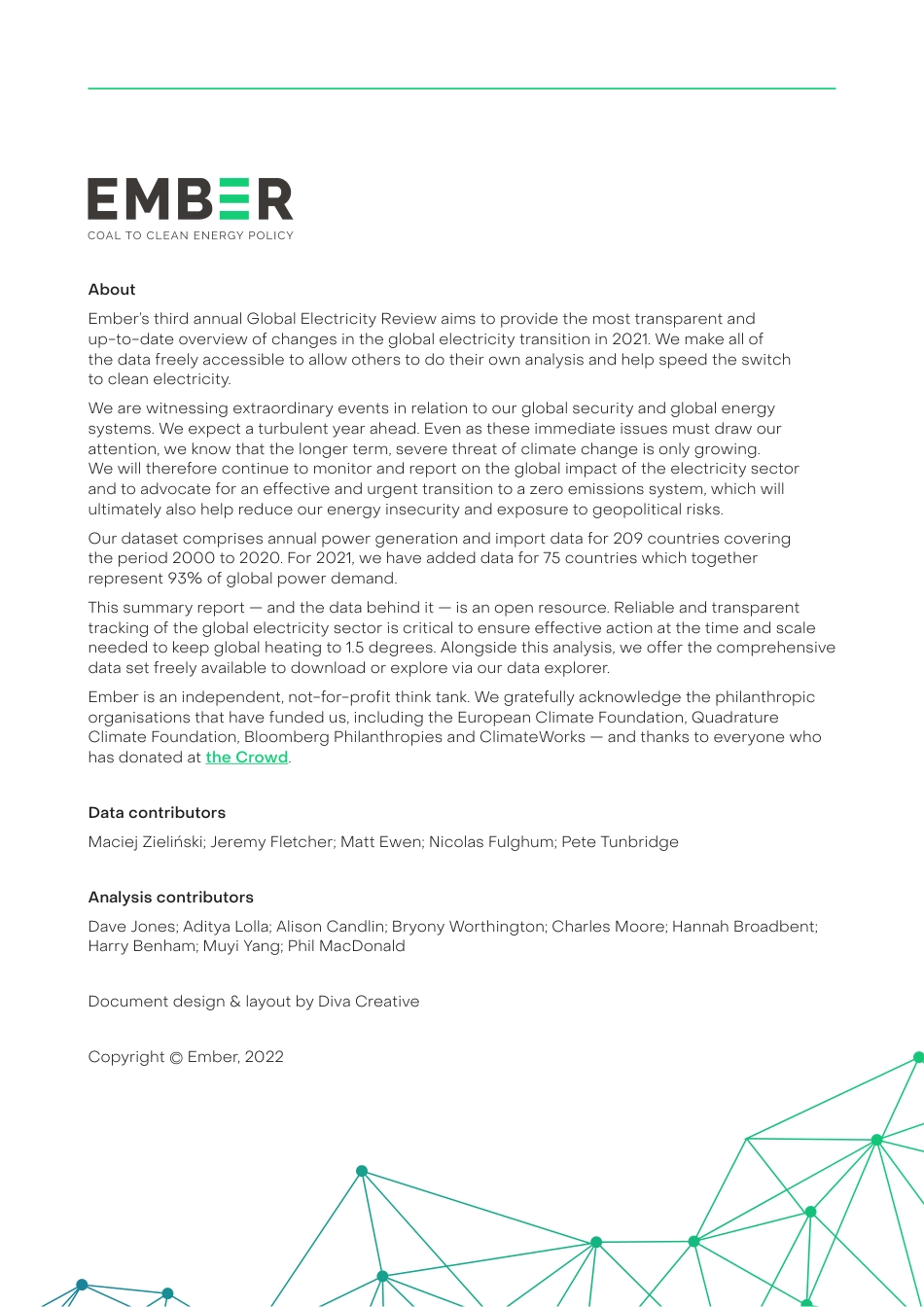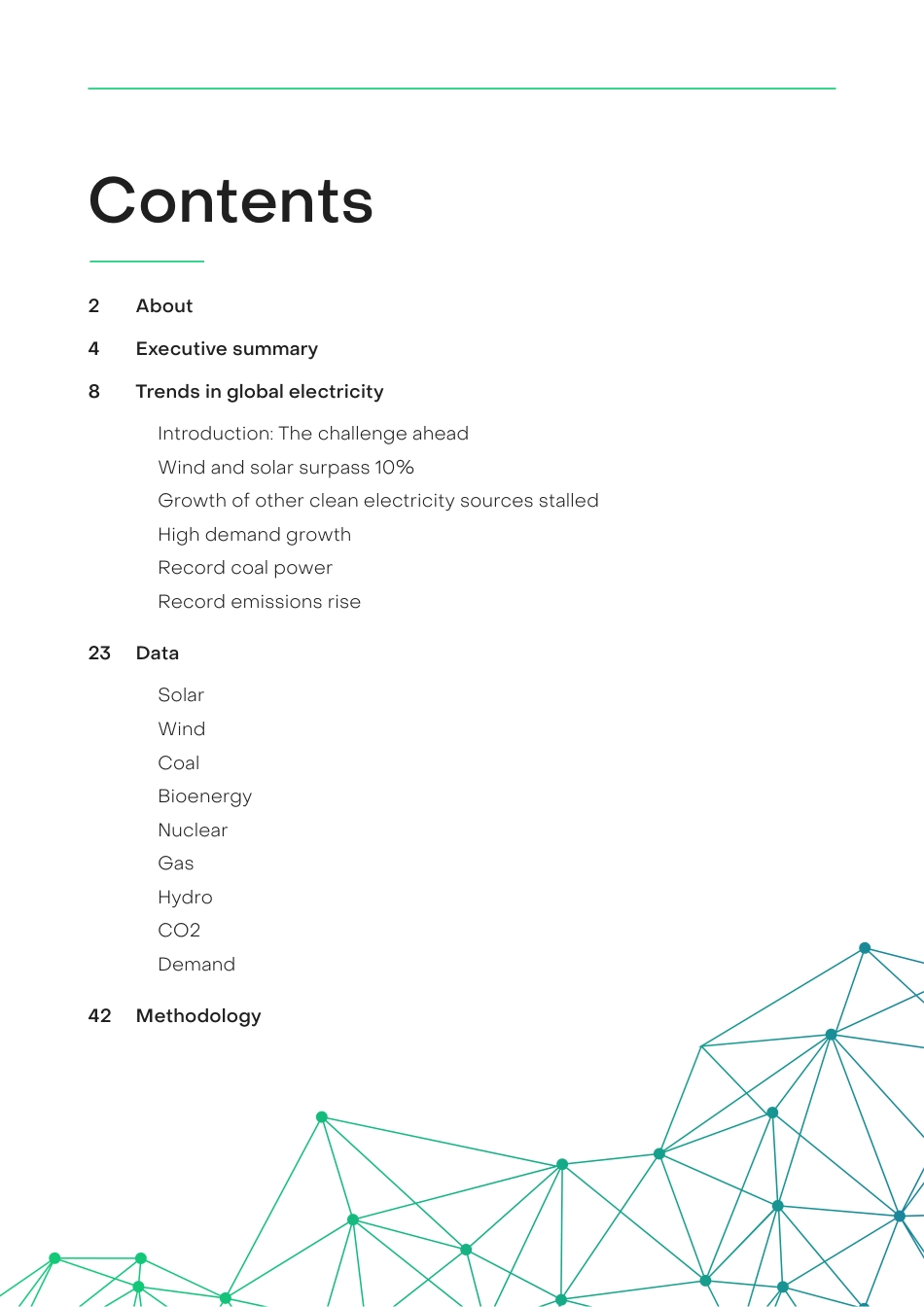Publication date March 2022Global Electricity Review 2022Wind and solar, the fastest growing sources of electricity, reach a record 10% of global electricity in 2021; all clean power is now 38% of supply. But demand growth rebounded, leading to a record rise in coal power and emissions.AboutEmber’s third annual Global Electricity Review aims to provide the most transparent and up-to-date overview of changes in the global electricity transition in 2021. We make all of the data freely accessible to allow others to do their own analysis and help speed the switch to clean electricity. We are witnessing extraordinary events in relation to our global security and global energy systems. We expect a turbulent year ahead. Even as these immediate issues must draw our attention, we know that the longer term, severe threat of climate change is only growing. We will therefore continue to monitor and report on the global impact of the electricity sector and to advocate for an effective and urgent transition to a zero emissions system, which will ultimately also help reduce our energy insecurity and exposure to geopolitical risks.Our dataset comprises annual power generation and import data for 209 countries covering the period 2000 to 2020. For 2021, we have added data for 75 countries which together represent 93% of global power demand.This summary report — and the data behind it — is an open resource. Reliable and transparent tracking of the global electricity sector is critical to ensure effective action at the time and scale needed to keep global heating to 1.5 degrees. Alongside this analysis, we offer the comprehensive data set freely available to download or explore via our data explorer.Ember is...



